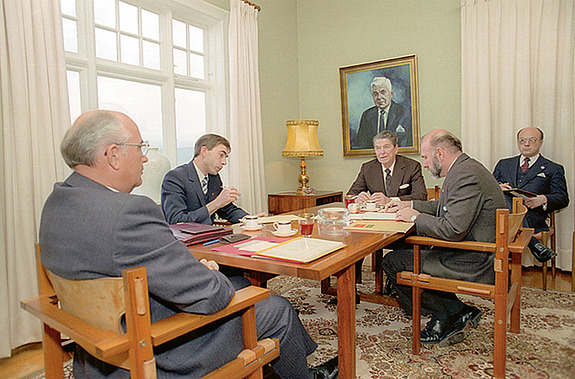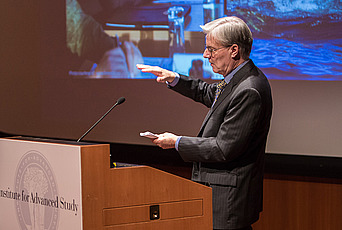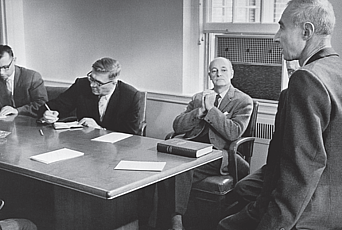A Distorted View of History Led America Astray

Several years ago, I was increasingly disturbed by the direction taken by American foreign and domestic policy. It seemed to me that many key actions were inspired by mistaken notions about the way the Cold War ended and the causes and implications of the Soviet collapse. Lessons that I, a witness to those events from senior levels of government, thought were obvious were either ignored or turned on their head, and broad theories with little footing in reality seemed to dominate the thinking of policy makers, both in the United States and in other countries.
Having described the development of American policy that produced a negotiated end to the Cold War in Reagan and Gorbachev: How the Cold War Ended (2004), and recounted the way the Soviet Union fragmented into fifteen successor states in Autopsy on an Empire (1995), I resolved to describe the lessons I would draw from the geopolitically seismic events of 1988–91, and to consider how American policy might still profit from a better understanding of those events.
My thoughts are set forth in Superpower Illusions: How Myths and False Idologies Led American Astray—And How to Return to Reality, published by Yale University Press (2010). In it I argue that myths about the way the Cold War ended, along with ideologies divorced from reality, led America into a series of blunders that drained its power and increased the dangers to its national security. I would summarize some of these mistaken ideas as follows:
Myth #1: The Cold War ended with the collapse of the Soviet Union.
NO! It ended well before the Soviet Union broke up.
Myth #2: Military and economic pressure destroyed Communist rule in the USSR.
NO! Mikhail Gorbachev undermined the Party’s control of the country because it was blocking the reforms he considered necessary.
Myth #3: The USSR collapsed under pressure from the United States and its allies.
NO! Internal contradictions caused its collapse, not external pressure.
These myths stem from a tendency to conflate three geopolitically seismic events that were separate, though connected:
- The end of the Cold War (1988–89)
- Weakening of Communist Party control of the USSR (1989–91)
- Breakup of the Soviet Union (December 1991)
The Cold War ended peacefully, by negotiation, on terms that were in the interest of a reforming Soviet Union. President Reagan had defined the terms of settlement on the basis of common interests. In time, Gorbachev accepted his agenda, since it was in the Soviet interest. As Gorbachev subsequently observed, “We all won the Cold War.”
The end of the arms race permitted Gorbachev to concentrate on reform at home, which in turn led to him ending the Communist Party’s monopoly of power, using contested elections as a major tool. President Reagan recognized, and stated publicly, that Gorbachev’s Soviet Union was no longer an “evil empire.”
While the United States supported the restoration of independence of Estonia, Latvia, and Lithuania, it favored Gorbachev’s effort to create a voluntary federation of the remaining twelve union republics. The breakup of the USSR, caused by internal factors, was a defeat for American policy, not a victory.
Myth #4: Russia was defeated in the Cold War.
NO! Today’s Russian Federation was not a party to the Cold War. It was part of a Communist-ruled empire. Its elected leaders in 1990 and 1991 were strongly pro-Western and aspired to replace communist with democratic values.
Myth #5: The Cold War should be considered World War III.
NO WAY! “Cold War” is a metaphor, not the real thing. There was never any direct combat between the United States and its allies with the Soviet Union. If there had been, we would probably not be here today to write about it.
The myths are also connected with the mistaken notion of “superpower.” The United States and the USSR were considered superpowers because they had the means to destroy the world. They were not superpowers in the sense that they could change the world using their superior military power. The end of the Cold War diminished American power since much of it had derived from its ability to defend countries against Communist aggression and infiltration. The world did not suddenly become “unipolar”; there was not even a “unipolar movement.” (So far as the power to destroy the world is concerned, the United States and Russia both still have that capability with their nuclear arsenals.)
While not a superpower in the sense that it could successfully rule other countries, the United States emerged from the Cold War the preeminent power in the world. It had the opportunity to create a safer world by strengthening international structures to deal with local conflicts, failed states, organized crime, and the threat of terrorism. It had the opportunity to reduce its military commitments abroad (there was no longer a Soviet Union to contain) and to accelerate the destruction of nuclear weapons started by Reagan, Bush I, and Gorbachev. Nevertheless, the Clinton administration, lacking a coherent strategy, was drawn into local conflicts not vital to U.S. security and without UN Security Council authority. It failed to bring Russia into the European security structure as a responsible partner and treated it as a defeated nation, thus undermining the prospects for democracy there and Russia’s full cooperation in dealing with global issues.
If the Clinton administration missed opportunites, the Bush-Cheney administration destroyed them. Having ignored warnings of an impending terrorist attack on the United States—which could and should have been prevented—it invaded Iraq without adequate cause or international sanction, ignored or withdrew from treaty commitments, stalled verified nuclear arms reductions, and took a series of actions that encouraged rather than deterred nuclear proliferation. It is ironic that a president who professed to admire President Reagan followed policies that were often the opposite of his, both in substance and in execution.
Myths about the Cold War and its end combined with theories taken to logical but unrealistic extremes undermined America’s strength at home. Market fundamentalism ruled the day and loosening of controls on banks and financial markets contributed to the subprime bubble and a near collapse of the financial system in 2008. Tax cuts despite two wars produced an unprecedented budget deficit, and the country as a whole began to live beyond its means, even as education and infrastructure were allowed to deteriorate. The United States became the world’s largest debtor at the very time it was experiencing the woes of imperial overstretch.
Meanwhile what passed for political debate at home was reduced to distorted slogans. The very meaning of many terms came under assault. There is nothing “conservative” about running large budget deficits, invading countries that are no direct and imminent threat, and exaggerating and sometimes fabricating intelligence reports, yet political spinmasters convinced a significant portion of the public that radical, high-risk, arguably illegal policies were “conservative.” In fact, foreign policy cannot be calibrated on a “conservative-liberal” scale, and neither can many domestic issues.
The Obama administration has made a start, turning the ship of state toward a more constructive course in such areas as the wars in Iraq and Afghanistan, nuclear weapon issues in Iran and North Korea, relations with Russia, nuclear arms reduction, missile defense, and the Israeli-Palestinian problem. Though President Obama has, in general, set a moderate course of change, obstacles both abroad and at home are substantial. He still must deal with damage to the nation inherited from past administrations and overcome entrenched special interests—some in his own administration—that resist change. Nevertheless, the change of course that resulted in the recent agreement with Russia to eliminate more strategic nuclear missiles in a verifiable fashion has been a signal achievement.


